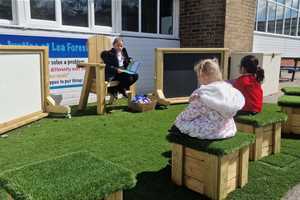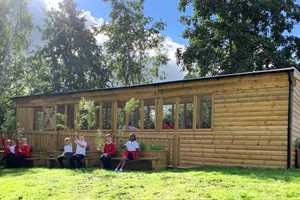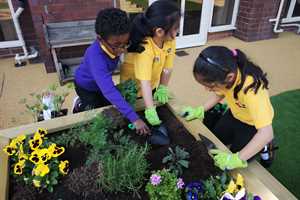
Outdoor Learning and Play
Outdoor Learning Activities for Rainy Day Play
Based on my own experience, an all day rainy weather forecast is often enough to dampen the spirits of early years and primary educators! Being stuck indoors during wet weather can certainly change children's behaviour. However, rain and drizzle can potentially increase the learning and play opportunities we provide for our young people.
Young children need to move, therefore they may find it difficult to be contained in a classroom environment all day. Children want to be physically active which leads to emotional wellbeing. Denying movement can cause feelings of frustration and discomfort. When children are given opportunities to explore their bodies and interact physically with their world through outdoor play they will be eager to find out and make meaning.
Dress for the Weather
As long as children and adults are dressed in suitable clothing which ensures they are warm, dry and comfortable they will be able to spend some time playing outside in all weathers. Wellies, spare socks, base layers, warm waterproof coats, waterproof trousers or dungarees, gloves and hats will allow children to happily embrace outdoor learning.
Transition Between Indoor and Outdoor Spaces
A classroom canopy acts as a fantastic transition area between the indoor and outdoor environment and would allow children to access waterproofs and wellies themselves.
Coat racks and welly racks help to develop independence and having a Storage Bench to sit on allows the process of getting ready for outdoor education to run smoothly.
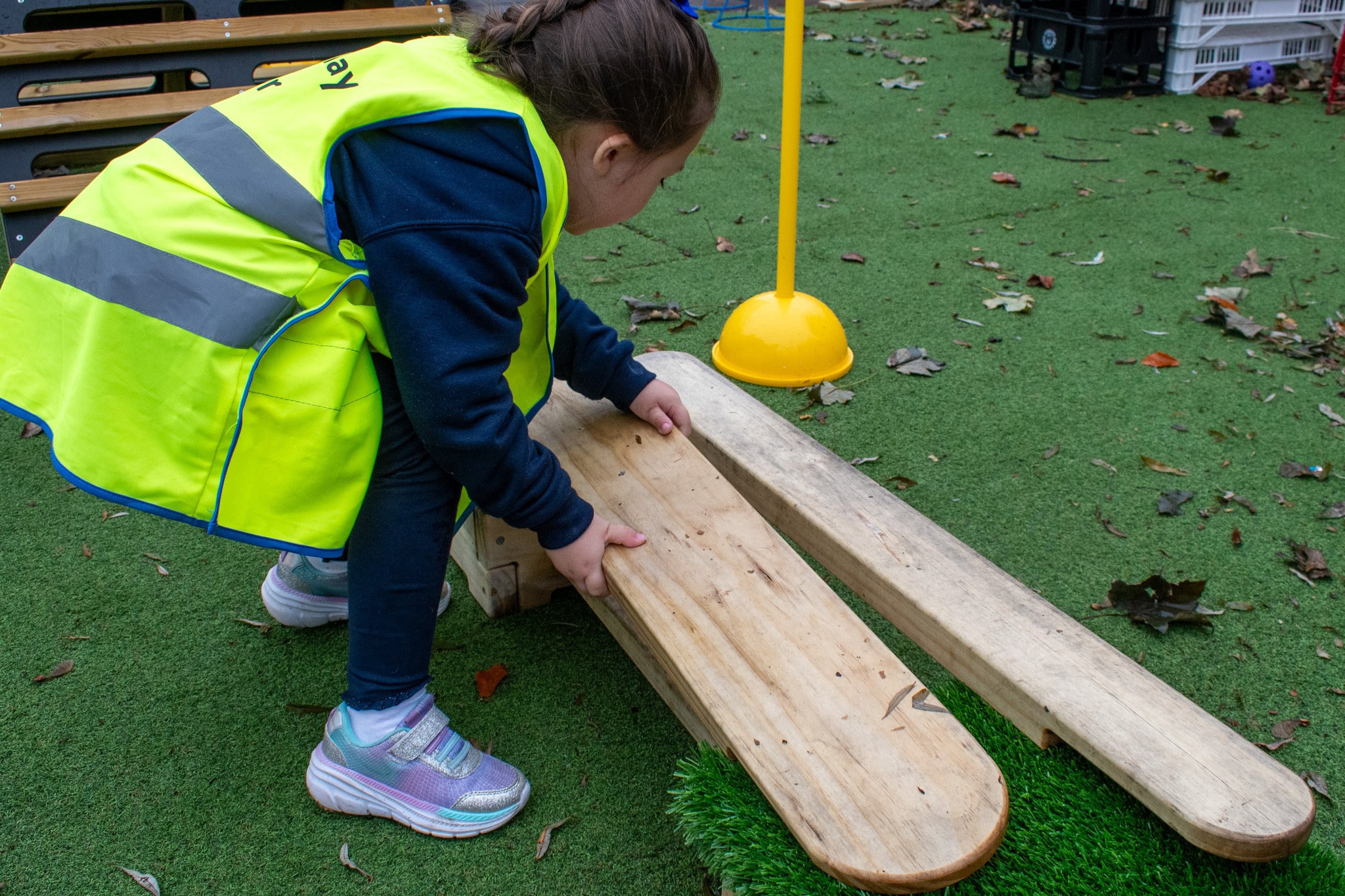
As soon as my youngest daughter senses rain she immediately sticks her tongue out to catch raindrops and searches for the nearest puddle she can jump in! The sound of raindrops, the sight of ripples in puddles, the feel of wet surfaces and the smell of fresh rain all contribute to a rich sensory environment.
Young children's enthusiasm for playing in the rain offers many worthwhile outdoor learning experiences, linking curriculum areas such as maths and science.
Here are some useful outdoor learning ideas for wet weather play.
Observing Raindrops
Pupils are often fascinated by following raindrops down a window pane or transparent tarpaulin. Children can have raindrop races with a friend. Which raindrop will reach the bottom fastest? What happens to it? Pupils could explore raindrops on different surfaces in the school grounds such as on a leaf, wood, concrete, soil.
To further explore their scientific outdoor learning provide children with wax paper and pipettes in the outdoor classroom. Using water with food colouring added to it children can cover their wax paper in water droplets and observe what happens.
Students can use their pipettes to move the water droplets around or blow the droplets using a straw. This activity can be repeated using foil and paper towels to allow children to see how water moves differently on different surfaces and to begin to understand absorption.
Sheltering from the Rain
Taking a moment to stop, pause and listen to the sound of rainfall can be quite relaxing or may help children to focus. Students will enjoy exploring their natural environment in the rain and searching for places where they can shelter. Could they use bushes, trees, canopies or dens?
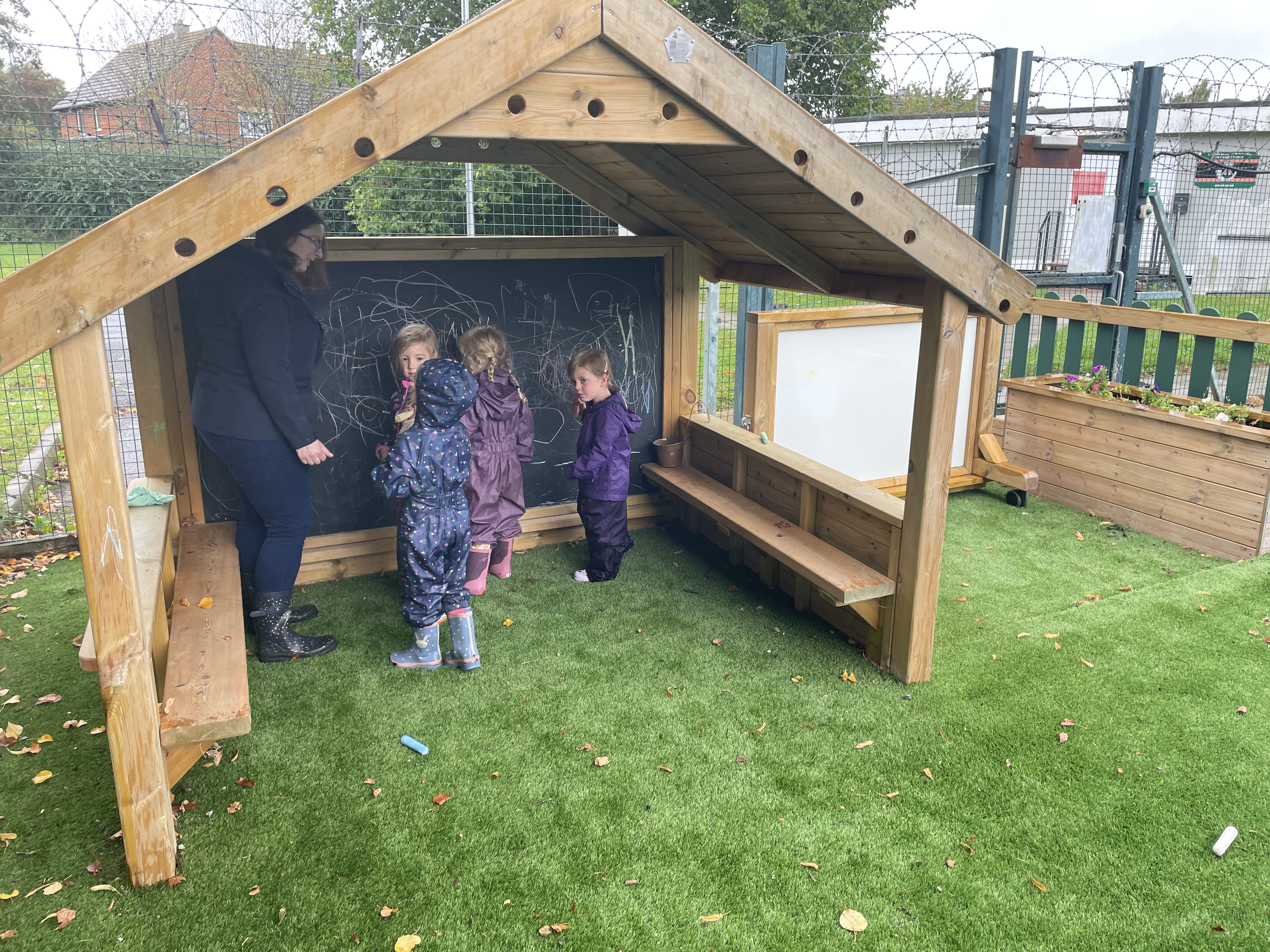
Rainy weather provides pupils with the perfect motivation to create a waterproof den or shelter. Den Making Posts are an ideal base to use with tarpaulins and fastenings. Children will be handling large resources and engaging in heavy work and gross motor skills such as lifting, carrying, constructing and balancing. Physical skills will improve and pupils will definitely keep themselves warm!
Puddle Play!
With rain comes puddles and in my experience children simply love puddles! The first thing children usually want to do is find the largest puddle they can jump in! After this, there are many further outdoor learning opportunities in which young people can explore puddles.
- Find the smallest and the biggest puddles in the school grounds. Use measuring tapes and rulers to measure puddles and record changes in size as they get bigger or dry up. Use sticks and permanent marker to measure the depth of puddles.
- Swirl a stick around in a puddle very quickly to create a whirlpool, add a toy figure and see what happens.
- Build a boat using natural found materials such as bark, twigs, leaves. Can pupils make the boat move from one side of the puddle to the other?
- Can children find natural objects to place in the puddle so that they can safely step across without their feet touching the water?
- Drop air flow balls of different colours into a puddle and give them a mix. Assign each child a different colour and provide them with litter pickers, grabbers or sticks to pick up their colour of balls. Set a timer and state that the winner is the child who picks up all of their colour balls first before the timer runs out.
Next steps in puddle exploration will encourage meaningful talk and will lead children into asking their own questions such as: What is a puddle? How is a puddle made? Are puddles always in the same place?
Teachers can introduce the idea that water might collect where it cannot run out or where the material means the water cannot soak away. Scientific vocabulary such as: drain, porous, waterproof, permeable and evaporate could be introduced at this point.
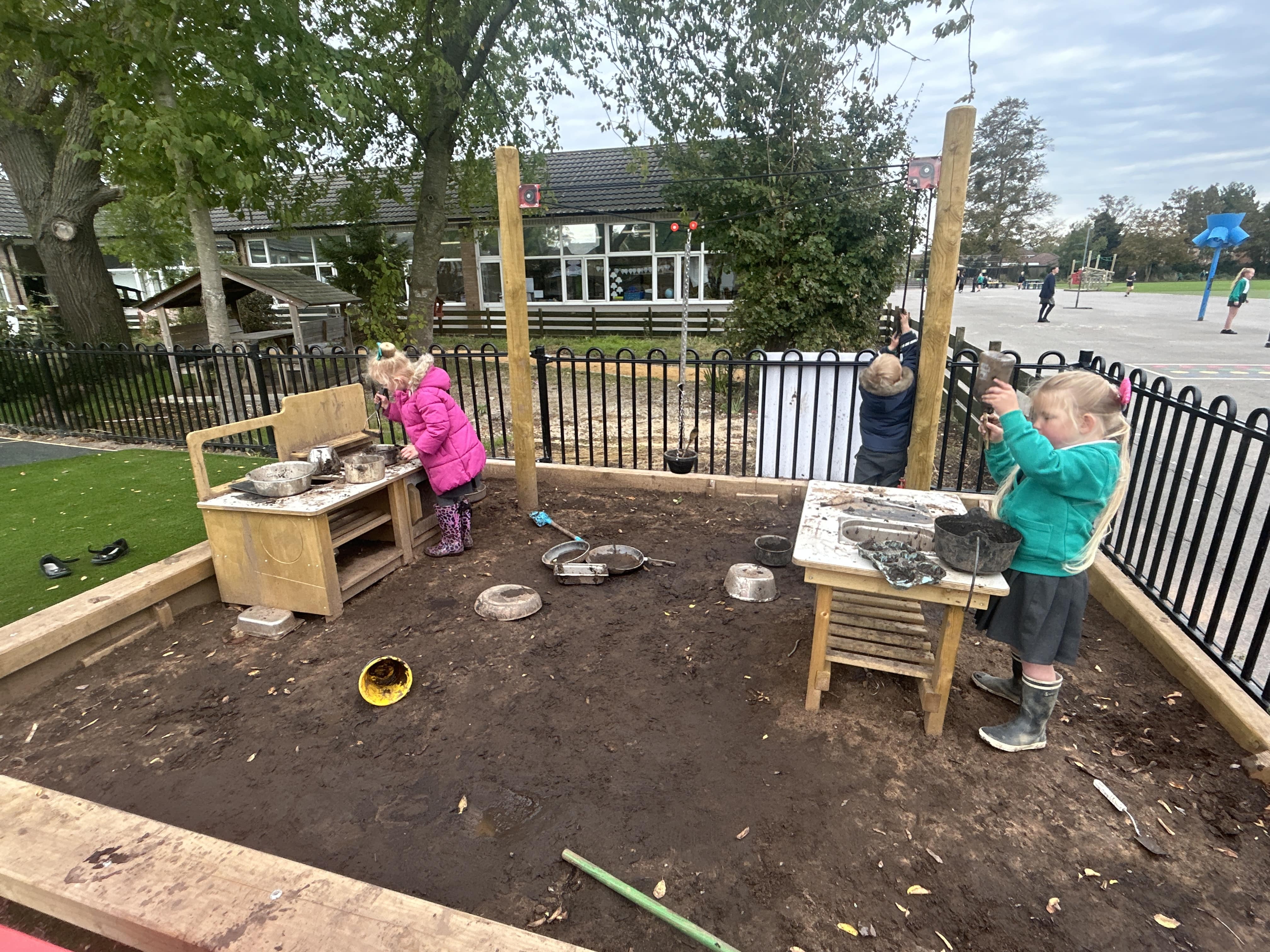
Learners can go for a walk around their school grounds/local community to find out where rain water collects and what happens to it. Pupils can look out for guttering, drains, water gathering or streaming along the pavement or soaking into grassy areas. Pupils may develop environmental awareness by discussing flood protection and sea defence measures.
'Once Upon a Raindrop - The Story of Water' is a brilliant picture book stimulus to introduce young classes to the water cycle.
Collecting, Using and Moving Rainwater
Children will be able to catch rain in a variety of different sized buckets and containers. This may lead on to making a rain gauge to measure daily rainfall.
Make a Rain Gauge
A simple rain gauge can be made using a clear plastic bottle.
- Cut the top section off a bottle.
- Use a ruler to mark increments starting about 2 inches from the bottom.
- Weigh the gauge down by placing several small rocks at the bottom. Fill the bottle with water to the 0 mark - this will calibrate your gauge.
- Invert the top of the bottle into the rain gauge to act as a funnel and place on a flat surface outside.
Pupils will improve social skills when using their Water Wall on a rainy day. Critical thinking is supported as pupils use their channels to direct the flow of rain water. Rainwater can also be transported using a Rope and Pulley Materials Mover. Children will have so much fun moving rainwater horizontally whilst developing essential gross motor skills.
Painting in the Natural Environment
After heavy rainfall children can use coloured chalks, powder and water based paints to create large outdoor canvases. Students can paint on different surfaces, creating vibrant effects.
Oil and food colouring can be added to puddles to make fun colours. Pupils can experiment with mixing these colours into the puddles. Paintbrushes can be used to experiment with pattern making.
Students can find out what happens when they leave paintings outside in the rain. What effects will the rain have on different mediums?
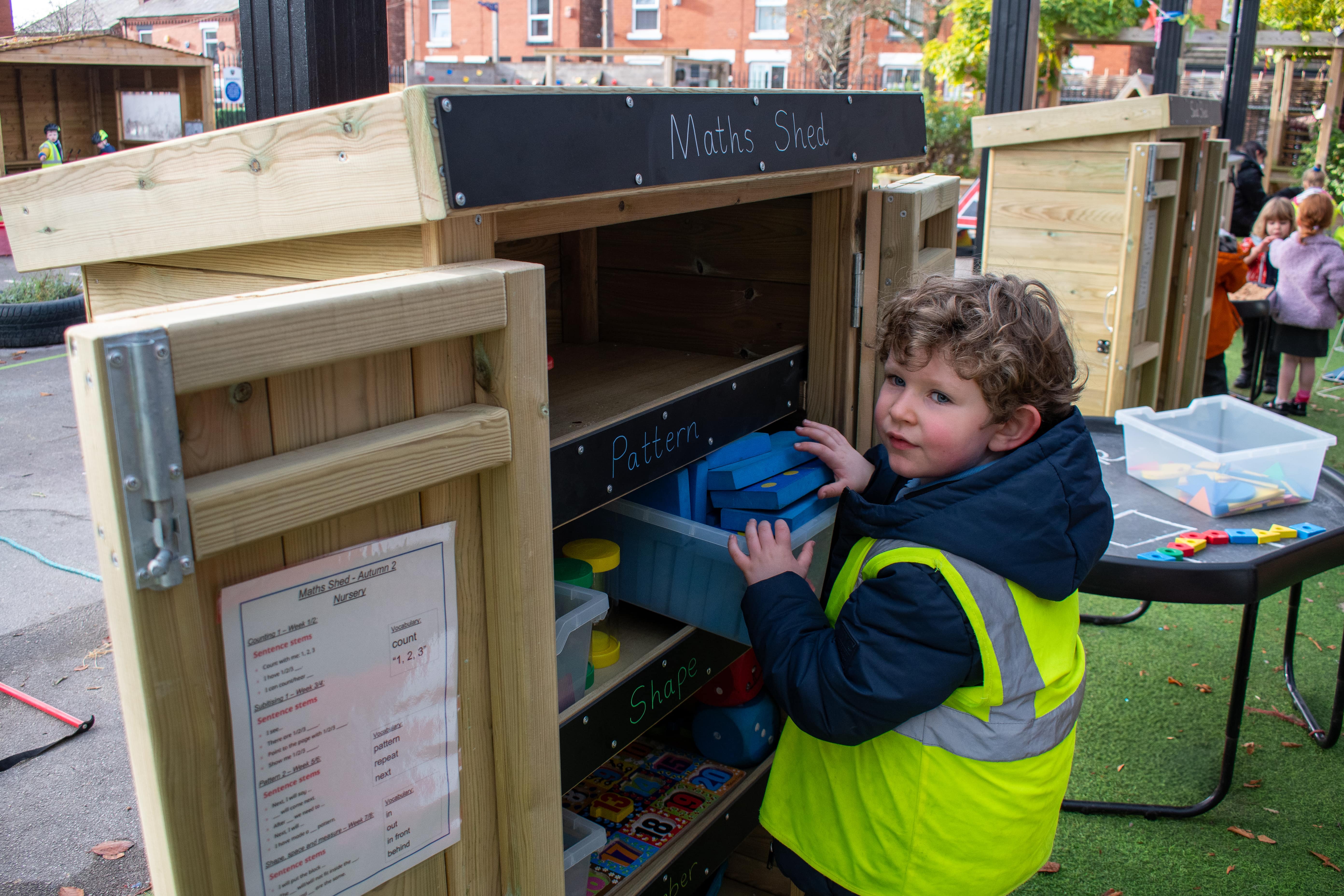
Teachers can sprinkle crumbled chalk or powder paint onto the playground. Using large brushes or mops, pupils can create sweeping movements to blend colours and create patterns.
Early years settings can hang up big sheets to allow children to create some vertical mud paintings. Sticks, leaves and paintbrushes can be dipped in mud allowing children to practise large shoulder movements.
Singing in the Rain!
Pots and pans can be taken outside in the rain. Children will feel a great sense of joy as they watch the rain bounce onto their outdoor drums and listen to the wonderful sound it creates.
Inspired by the sounds of the rain children could retreat to the outdoor classroom to create their own rain stick instrument. This can be simply made by filling a cardboard tube with rice, beads or pasta and sealing the ends.
Songs and rhymes with a rain theme are perfect for singing, chanting and dancing in the rain. Classes could try: 'I Hear Thunder,' Doctor Foster and of course 'Singing in the Rain!'
Go on a Minibeast Hunt
Minibeasts such as slugs, snails and worms love the wet weather and often come out of hiding after it's been raining. Pupils can venture over to the Bug Hotel or search in their local area. Children could complete a minibeast log, recording their findings of where particular minibeasts where hiding. Students could also use natural materials to create new habitats to encourage more insects to visit the school's outdoor play area.
Pupils will develop an appreciation for their environmental surroundings and can also learn about food chains and life cycles of different creatures.

Children can experience great joy when they are allowed to venture outside during rainy weather. Pupils should be encouraged to be active by jumping in puddles, using buckets to pour and digging in the wet soil when conditions are slippery. This allows children to asses risks as well as building important physical skills such as balance and coordination.
When young people play outside during the changing seasons they progress from being unconscious to conscious observers of their environment, therefore gaining an understanding and appreciation of nature. Perhaps next time a drizzle begins, grab those waterproofs and wellies, head outside and discover what natural wonders await.




